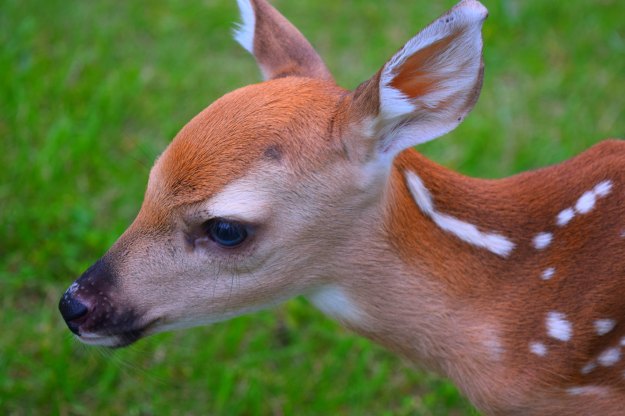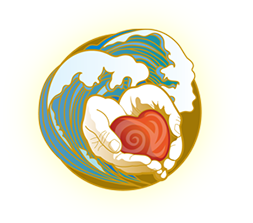Sometimes I have a hard time dealing with anger. This is true both when it arises in myself and when it arises in others. Things are definitely improving on this front, and I’ve even come to appreciate and respect anger. It has actually been a great teacher in many ways. Even so, when a colleague of mine got angry recently, the way I reacted was probably predictable based on my history. What was different, though, was my ability to witness myself as I moved through the experience.
As anger arose in my colleague, my first response was to desperately try to placate her in various ways. My boundaries fell away. It was suddenly all about an urgent need to ‘please’ her. When that didn’t work, I quickly cascaded down into other responses: first, an urge to run away, followed by a sense of helplessness, dread, and finally dissociation. As I watched myself move through the phases of response, I became consciously aware of the pattern on a much deeper level than ever before. For me, revelatory experiences such as these happen in a sort of rapid succession, like dominoes tumbling, where I suddenly see the pattern woven into the fabric of events throughout my life.
The situation had triggered in me a chain of automatic responses that had been wired into my autonomic nervous system (ANS) in childhood as an effective survival strategy. The ANS is the part of the nervous system that coordinates an awe-inspiring range of activities (breathing, digesting, oxygenating, metabolizing, immune system functioning, sensing, moving, etc.), all without our conscious mind needing to understand or control these processes. It is also the aspect of the nervous system that manages our automatic responses to threat. The Polyvagal Theory proposed by Stephen Porges suggests that there are three branches of the ANS, sometimes referred to as the “triune” nervous system:
1) The parasympathetic branch (most ancient)
2) The sympathetic branch (newer)
3) The social engagement branch (newest, most modern)
The theory says that the three branches respond to stressful situations hierarchically, in order of the evolutionary age of each branch. That is, the first response to stress will be from the newest branch, the social engagement system (social/relational tactics). If that response does not work, the next response will be from the sympathetic branch (fight or flight). And finally, if that fails, the final response will be from the parasympathetic branch (freeze/immobilization, dissociation, collapse). Intellectually understanding the hierarchical responses of the ANS is one thing; experiencing those responses in ourselves with some capacity to witness them as they are happening is quite another. The incident with my colleague has been a great teacher for me in this way.
As I’ve reflected on the experience, one aspect that sticks out for me is my immediate ‘please’ response to try to avoid aggravation of the situation. This is an often overlooked survival strategy we can learn to employ as children, especially in ongoing stressful situations. Roland Bal speaks brilliantly about this in his blog, “The Pitfalls of Empathy as a Please Response”:
The ‘please’ response is a prevalent one especially with complex trauma or CPTSD and is acted out as a result of high stress situations that have often been drawn out. Any survival response like fight, flight, freeze, or please/fawn, is to manage a state of danger or potential danger. The please response is the most thoughtful and complex response to deal with [danger] as it encompasses monitoring and feeling into other people’s states of mind (often the aggressor) to anticipate a situation and respond by adapting and pleasing to evade confrontation or before a situation becomes aggravated. … When you resort to a please response, you take on responsibilities which aren’t yours to bear.
 Of course, in the situation with my colleague, I was in no real danger, but as a young child, my survival depended upon those around me being somewhat mentally and emotionally stable. When my colleague got angry, I unconsciously perceived a similar kind of threat as I had experienced in childhood and responded automatically with what had worked then. First, I attempted the ‘please/fawn’ strategy. Then, when that did not work, I had the urge to run away. When I quickly realized there was nowhere to go, I experienced helplessness, dread, and eventually some level of confusion and dissociation.
Of course, in the situation with my colleague, I was in no real danger, but as a young child, my survival depended upon those around me being somewhat mentally and emotionally stable. When my colleague got angry, I unconsciously perceived a similar kind of threat as I had experienced in childhood and responded automatically with what had worked then. First, I attempted the ‘please/fawn’ strategy. Then, when that did not work, I had the urge to run away. When I quickly realized there was nowhere to go, I experienced helplessness, dread, and eventually some level of confusion and dissociation.
The stress response of the social engagement branch is not often talked about very clearly. More often, just as with the parasympathetic branch, the healthy functioning mode is emphasized. We are all probably familiar with the “rest and digest” mode of the parasympathetic branch. Indeed, often the goal of therapy is getting into this healthy functioning mode of parasympathetic. For those who are aware of the social engagement branch, the focus is usually on the relational field with the goal of establishing safety, connection, and support. When a safe and healthy relational field is established, the healthy mode of the social engagement system can engage, and when this happens, the stress responses of the other two branches are down-regulated. But what about the stress response of the social engagement system? What does that look like?
I have actually only heard a few examples related to this topic, such as our tendency to work together in groups in the case of an emergency, our natural impulse to comfort those who are distressed, or the mother’s instinct to gather the children together to protect them from danger. These kinds of responses are certainly wired in as part of a healthy social engagement system response to stress. But based on my recent experience and having pondered this topic for quite a while now, I think that as children we also ‘figure out’ and employ many other kinds of survival strategies at the social engagement level. If a strategy works, I think it gets reinforced as the “go to” first response of the social engagement system to similar types of threats. Importantly, many of these strategies are not necessarily healthy for us as adults. Case in point is my ‘please/fawn’ response in the situation with my colleague. This strategy worked well enough as a child, but in the situation with my colleague, it meant that I dropped my boundaries and took on more responsibility than was mine to bear.
These types of responses are very complex and nuanced strategies that we use to survive difficult and unique circumstances in childhood. The social engagement branch is the newest and most sophisticated branch of the autonomic nervous system, so it makes sense that its survival strategies would be highly nuanced, complex, and interlinked with our cognitive mind, ingrained belief systems, and other aspects of our neurology. Also, the fact that the ‘please/fawn’ strategy was my first response in the situation with my colleague suggests to me that it was a social engagement system stress response. That is, if the theory of hierarchical response of the ANS is valid, then it makes sense that my first response would be a social response (the ‘please/fawn’) before cascading down the chain into my flight response (sympathetic) and finally helplessness and dissociation (parasympathetic).
This could be a very rich topic to explore in more depth, as I’ve seen and experienced in myself numerous other examples of what could be considered the social engagement system’s stress response. When I feel threatened, my automatic reactions almost always begin with some sort of attempt to manipulate the situation at a social level. And I’ve also noticed there are ingrained belief systems that influence and maybe even drive these strategies.
Can you relate to this? What sorts of strategies do you employ at the social level when you feel stress or threat? Leave your comments in the section below.
Visit Penny’s website to learn more about her and her offerings: http://pennyheiple.com



